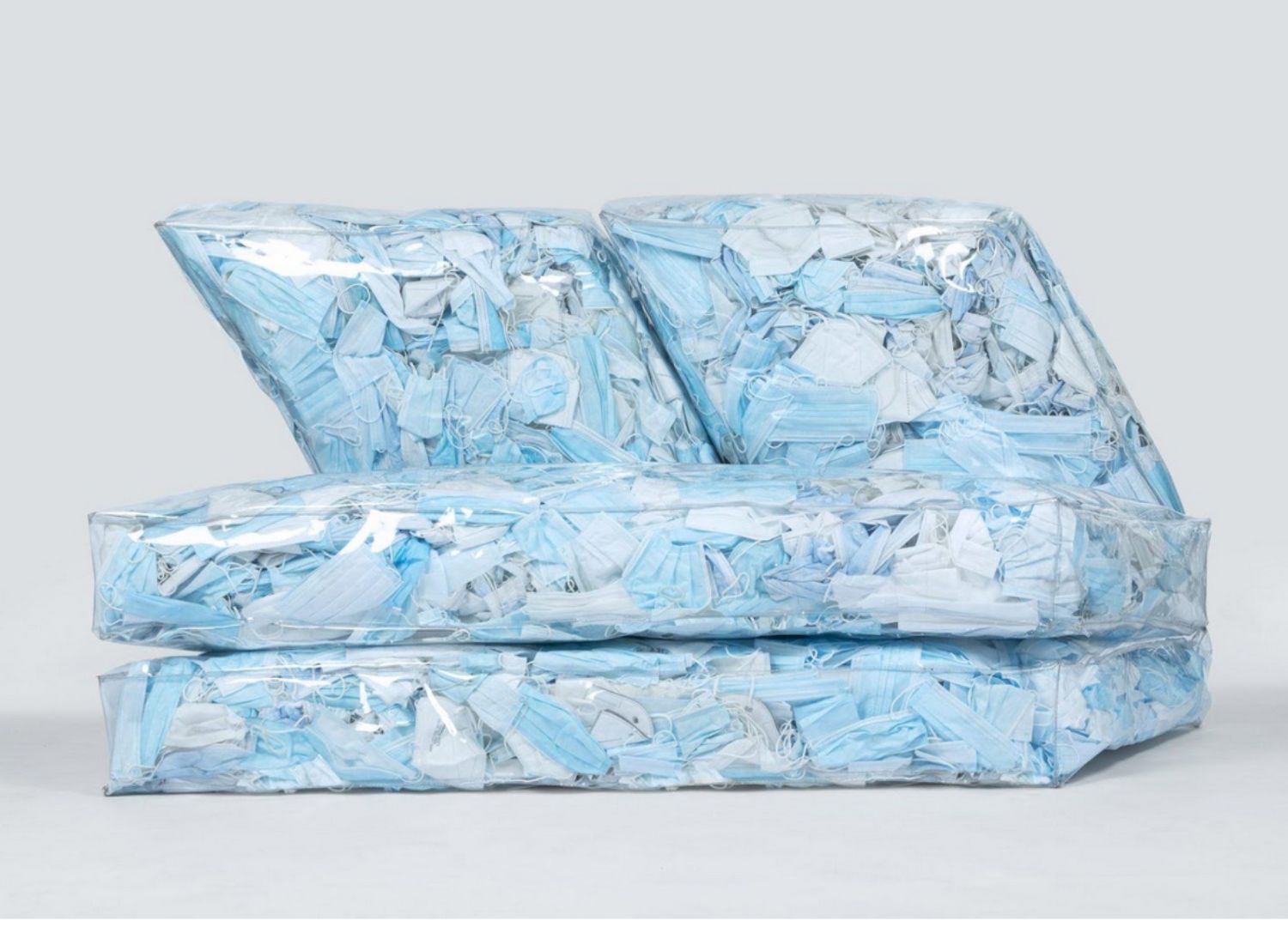5 unique projects using recycled face masks
By recycling face masks into stunning products, designers all around the globe raise awareness of their harmful environmental impact

Since the beginning of the pandemic, it is hard to imagine the number of disposable face masks that have been mandatorily used and then discarded around the world.
While they have been an integral part of keeping us safe, the harm they’ve caused is also significant.
In one month alone, 129 billion masks were thrown out worldwide, creating massive pressure on the environment.
They are typically made of polypropylene, which, unfortunately, can break into microplastics, which end up in seas and rivers.
If eaten by wildlife, these microplastics create significant harm to their digestive tracts.
So what can we do to avoid tossing disposable masks out?
We can recycle them and, in the process, create stunning product designs.
Here’s a list of designers who have given disposable face masks a new, beautiful life.
Veil Stool by Joe Slatter
When you look at the Veil Stool, you could never imagine it has been made from more than 4,000 disposable masks collected from the streets of London.
But, surprisingly, it is true.
The unique product was created by designer Joe Slatter who discovered through experimentation that the three-layer masks could be twisted into a soft yarn and fused into a dense polypropylene structure.
If you Google disposable masks, you would most likely stumble upon results that suggest they aren’t reusable.
Still, the designer wanted to check this for himself, as, in theory, masks should be recyclable as they are made of polypropylene.

Joe then tore the face mask he was wearing.
The designer realized the fibers could be extracted and twisted to produce a soft, wool-like yarn.
Using elastic straps, Slatter created a base to which he attached the yarn using a simple cross-stitch technique called smudging.
The base with three support legs was made by melting disposable face masks into a dense polypropylene mass.
Stack and Stack stool by Haneul Kim
Determined to make our planet a better place, more and more designers are looking for ways to create eco-friendly products from plastic waste.
For example, South Korean designer Haneul Kim came up with the idea of using masks to make stools, thus creating an opportunity to explore design solutions for recycling plastics.
He started collecting discarded face masks at the Kewwon University campus.
Through various experiments, Kim gradually developed a process that turns these used masks, which harm our planet, into playful stools with a unique style.

Due to their texture, as you look at them, it almost seems like they are made from natural materials.
Each of the designer’s stools is made from 1500 face masks stacked on each other, fused, and constructed.
Blue Metamorphosis by Weam Baroudi, Santa Laude, Jenni Palokaj
The name of the three designers’ collection perfectly describes what it’s all about.
Dedicated to transforming face masks into new materials, the project also aims to raise awareness among face mask users.

Within the collection, they’ve created materials that have different properties (depending on their processing).
They can be used to make objects of various hardness, offering more design freedom.
Couch-19 by Tobia Zambotti
Just imagine – sleeping on a couch that was made from used disposable face masks.
This is precisely what Tobia Zambotti has made possible.
The designer’s goal in this project was to transform something considered waste into something meaningful.
This way, he wished to draw people’s attention to the environmental risks of disposable masks.

For this project, Zambotti used them as a sofa filling.
In total, more than 10 000 were used in the process.
The masks were collected with the help of the inhabitants of Pergine Valsugana, Zambotti’s hometown in northern Italy.
Coat-19 by Zambotti and Aleksi Saastamoinen
Another smart creation of the Italian designer (together with Aleksi Saastamoinen) is a puffer jacket filled with plastic face masks.
Interestingly, most puffer jackets on the market use polypropylene as their filling, so Zambotti realized masks would work great too.
For this project, the designer collected 1 500 light blue disposable face masks littered on the streets of Reykjavik and disinfected them with ozone spray.

Zambotti then worked with Alexis Saastamoinen, a fashion design student from Aalto University in Finland, who turned the recycled masks into jacket stuffing.
They deliberately made the outside of the puffers out of an opaque, waterproof laminate material.
This way, you could see the piece of clothing consists of masks.
To sum up
From the start of the pandemic, scientists have warned the world that disposable face masks would have a terrible effect on the environment.
However, as these smart designs show, masks can be repurposed.
When recycled, they often outperform pure polymers in strength and flexibility, so you can kill two birds with one stone – protect the environment from waste and, in some cases, save money.










